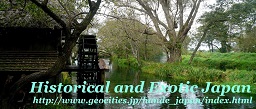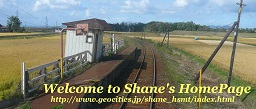|
Kenchoji Temple
|
Kenchoji Temple was founded in 1253 by HOJYO Tokiyori
(1227 - 1263)
, the fifth regent of the "Kamakura Bakufu" in the Kamakura Age
(1185 - 1333)
.
At the end of the Kamakura Age, the five most important Rinzai temples in Kyoto and Kamakura were respectively selected. Kenchoji Temple was nominated as the most important temple among five important temples in Kamakura.
A "Somon" Gate is located at the south end of the temple.
The gate was originally built in 1783 at "Hanjyu-Zanmaiin Temple in Kyoto, and was moved to Kenchoji Temple in 1940.
After passing through the "Somon" Gate, you will walk on the well-maintained approach to a "Sanmon" Gate.
You will see that Kenchoji Temple is surrounded by deep forests and the "Sanmon" Gate is among trees.
The "Sammon" Gate is the main gate of Kenchoji Temple and was rebuilt in 1775.
The height of the gate is more than 30 meters and you will be overwhelmed by the size of the gate and also the dignity of the gate.
|
|
The tablet is displayed at the gate, and the letters mean "Kencho-Kokoku-Zenji" in Chinese characters, which is the official name of Kenchoji Temple.
Those letters were written by Emperor GOFUKAKUSA
(1243 - 1304)
.
The five hundreds of "Rakans" statues are placed on the upper floor of the "Sammon" Gate.
If you walk on the approach, you will see a "Butsuden" Hall, the main hall of Kenchoji Temple. The Jizo statue, the principal object of worship at Kenchoji Temple, is located in the hall.
The current building of the "Butsuden" Hall used to be the mausoleum building of OGO-no-Kata or SUGENIN
(1573 - 1626)
, who was the lawful wife of the second "Shogun", TOKUGAWA Hidetada
(1579 - 1632)
, in the Edo Age.
Behind the "Butsuden" Hall, a "Hatto" Hall, a lecture hall, is located. The current building was re-built in 1814.
Kenchoji Temple belongs to the "Rinzai" Sect, one of "Zen" Sects in Japan, and is a main temple where the priests are practicing "Zen" training. All the "Zen" priests come to the lecture hall and Buddhist memorial services are held time to time.
The below right picture shows the scenery when you look back to the Sammom Gate from the "Hatto" Hall. The Sammom Gate, the "Butsuden" Hall and the "Hatto" Hall are aligned on the center axis of the temple from the south to the north. The wide aisle runs besides the temple buildings. The well-arranged layout of the temple buildings tells that Kenchoji Temple is a traditional and an important temple.
The "Sammom" Gate, the "Butsuden" Hall and the "Hatto" Hall are designated as important properties of Japan.
|
|
The above left picture shows the scenery of a "Hojyo" Hall located at the back side of the temple. In front of the "Hojyo" Hall, a "Karamon" Gate is located.
The "Karamon" Gate was originally built in 1628 as the mausoleum gate of OGO-no-Kata or SUGENIN, and was moved to Kenchoji Temple in 1647. The gate is very gorgeous. The "Karamon" Gate is also designated as an important property of Japan.
|
|
In the "Hojyo" area, there is a beautiful garden. The garden was built in the
Edo Age. You will be relaxed and be refreshed with this beautiful view.
|
|
|
How to get there
From Tokyo, you will take a Yokosuka Line train or a Shonan-Shinjyuku Line bound for Zushi. Get off at Kita-Kamakura and take a Enoden Bus bound for Kamakura Station. Get off a bus at the Kenchoji bus stop.
Other Historical Sites near by:
Enkakuji Temple
Tsurugaoka-Hachiman-Gu Shrine
Kaizoji Temple
Kotokuin Temple
|
|

 Home Page in Japanese: "Shane's HomePage"
Home Page in Japanese: "Shane's HomePage"

 Home Page in Japanese: "Shane's HomePage"
Home Page in Japanese: "Shane's HomePage"